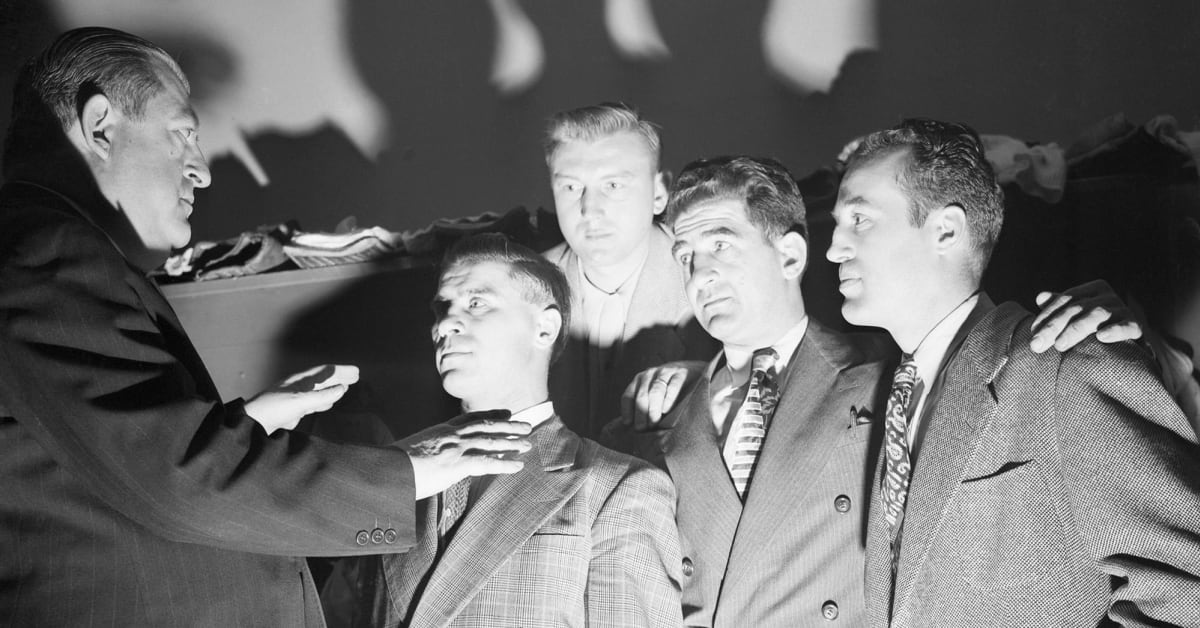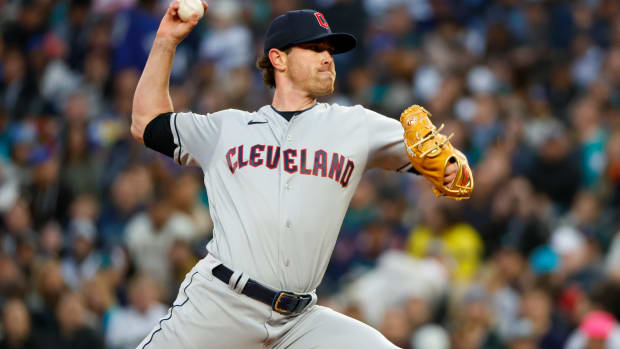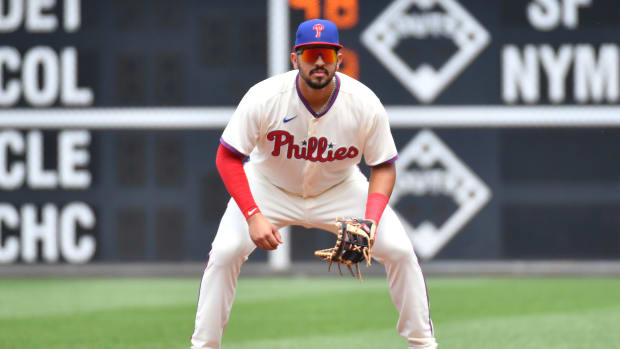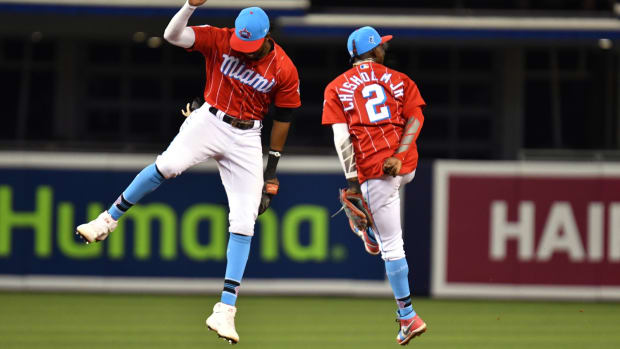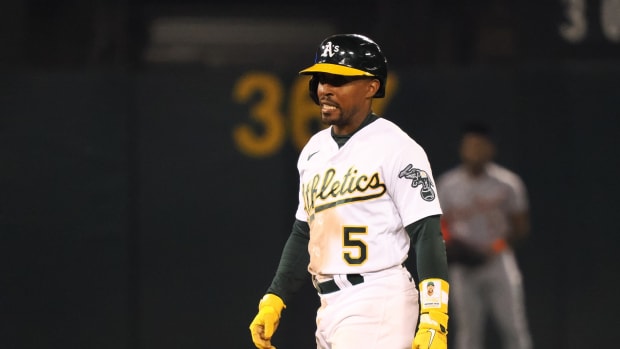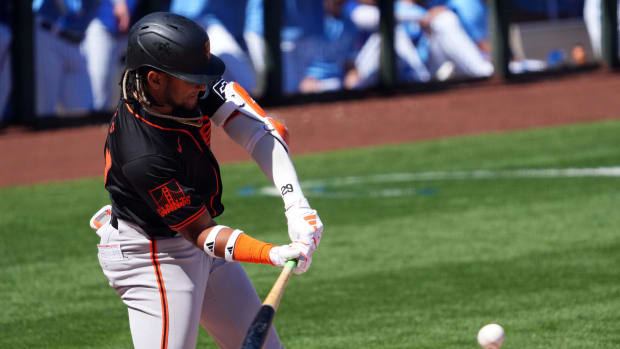He Had Them Mesmerized
Excerpted from the book MIND GAME: An Inside Look at the Mental Health Playbook of Elite Athletes by Julie Kliegman. Copyright © 2024 by Julie Kliegman. From Rowman & Littlefield Publishing Group. Reprinted by permission.
Mental health in sports might seem like a brand-new conversation, thanks to the likes of Simone Biles, Naomi Osaka, Kevin Love and DeMar DeRozan stepping forward and talking openly about their struggles in recent years. But the truth is that there’s a long, rich—and sometimes quite bizarre—history of sport psychology that paved the way for our modern-day dialogue. Coleman R. Griffith, working with the Chicago Cubs in the late 1930s, became the first sport psychologist to embed within a team, starting a practice that’s now common across collegiate and professional sports. He may have been the first, but someone else was arguably the most interesting character in the early days of the field in the U.S.
David F. Tracy, a hypnotist apparently without a doctorate degree in anything, improbably became one of the next faces of sport psychology three-quarters of a century ago. York University professor and Psychology Gets in the Game coeditor Christopher D. Green, likely restraining himself, called Tracy “kind of a flimflam artist.” But as Alan Kornspan, a sport psychology scholar, pointed out, “Tracy’s texts, and the things that he wrote about [sport psychology], were very similar to what we talk about today.”
In June 1949, Tracy was at a New York City restaurant next to a lecture hall with other psychologists soaking in the air conditioning when a reporter, Claire Cox of the United Press Association, asked him whether psychology could be applied to baseball players. Yes, he said. He had worked with actors, radio commentators, and musicians, so why not athletes? Cox then asked whether he could work with a whole team at once. He replied, “Yes, it’s better that way.” He didn’t put much thought into telling Cox names of two teams he’d most like to work with: the Philadelphia Phillies or the St. Louis Browns. The conversation ended quickly and was forgettable for Tracy.
Buy MIND GAME: An Inside Look at the Mental Health Playbook of Elite Athletes
To his surprise, three days after the talk with Cox, Tracy found newspaper clippings in his mailbox, including “Psychologist Offers Services to Browns” and “Doctor Thinks Browns Need Help.” Then, in September, Charlie DeWitt, a co-owner of the Browns, gave him a ring. Once Tracy got past what he thought was a prank call, he set up an appointment to meet with DeWitt the next day. They spoke of two semipro pitchers Tracy had been hypnotizing—yes, hypnotizing—twice a week. (Tracy, who was a medical student before World War I, had begun hypnotizing people during the war at a U.S. Army hospital in London.) DeWitt was reluctant to bring Tracy on in the middle of the season, but reporters inevitably caught wind of the meeting, and one of them, Bob Cooke, sports editor of the New York Herald-Tribune, encouraged him to give Tracy a shot that next year. “The eyes of the entire sports world will be focussed on the Browns,” Cooke apparently told DeWitt per Tracy’s retelling in his fascinating 1951 memoir, The Psychologist at Bat.
A few months later, at the winter meetings in New York, DeWitt and his older brother and fellow Browns co-owner, Bill, brought their wives and team manager Zack Taylor to dinner with Tracy. Of the five, Tracy hypnotized four right then and there, one by one, at their request. Normal stuff. Only Bill DeWitt held out. But he called the next morning and on hearing that his wife, who had had a headache, and sister-in-law, who had had shoulder pain, slept well, was sold. “You certainly performed miracles with them, and I hope you’ll do the same for the Browns,” Bill told him. That was the thing about hypnosis, at least as Tracy applied it: It could be used to treat any number of ailments or improve performance in any number of ways. It doesn’t even always seem as if Tracy and his subject set an intention for the session beforehand.
The skepticism from outsiders came fast, even before Tracy rode the train with the team from St. Louis to California in March 1950. “The newspaper reporters landed on me as if I were a $100,000 rookie,” he wrote. “With only a few notable exceptions, the reporters called me everything from a fake and a phony to a ‘hypnotist with a magnetic eye.’” Within the clubhouse itself, too, trouble arose immediately. After Tracy had arrived in St. Louis on February 20, the DeWitts and Taylor set clear boundaries: He could not attempt hypnosis on the field, he was not a coach, he was not to sit on the bench with the guys, and he could not even so much as talk to them during games. This, of course, frustrated Tracy endlessly. “My job, it was turning out, was to perform a few psychological miracles on the Brownie players, hypnotize them in front of newspaper men, get write-ups in the papers and perhaps sell some season tickets,” he wrote. “Psychology was to effect a vast improvement—at the box office.”
Despite his misgivings about the job, Tracy did not waste any time hypnotizing the Browns. He first selected Owen Friend, a six-foot, 23-year-old second baseman who had been called up to the majors on the last day of the 1949 season. Tracy told him his hands had magnetic powers, and he used the power of suggestion: Friend stood with his back toward Tracy, who told the player that “as I drew my hands past his head he would feel an invisible force pulling him back into my arms.” Then the second baseman apparently fell back “almost immediately.”
Tracy then had Friend face him and told the player he would be unable to unlock his hands without getting permission. Then Tracy did what we always imagine hypnosis to be. He told Friend that his limbs and the rest of his body were growing heavy and that he was falling deep asleep. “At that time,” Tracy wrote, “his eyes closed shut and he went into a deep hypnotic trance.” He told Friend that while in the trance, he would be unable to move when awakened until given permission. Friend, once awake and apparently immobile, told Tracy, “Doc, I want to learn this—this is terrific.”
After Friend, Tracy proceeded to hypnotize seven more guys on that first morning. As the Browns performed well in spring training, the DeWitts were satisfied with Tracy—or perhaps just satisfied with the publicity he generated—and asked him to stay on through at least the first month of the regular season. The hypnotizer, for what it’s worth, seemed to acknowledge the limits of his craft: “No amount of psychology is going to make a .300 hitter out of a .220 hitter, or a slugger out of a chop hitter, or a slick fielder out of an average shortstop. All psychology can do is help a natural .300 hitter to develop his latent ability and actually hit .300.”
Throughout the season, Tracy bore a weight on his shoulders. He felt like the sole representative of “Psychology,” with a capital “P,” in baseball, and like the DeWitts and Taylor had nothing to judge him against since no one other than Griffith had worked with a professional club. He also felt like Taylor saw him as just “about a step above the bat boy.”
But other coaches did seek out and value his advice, Tracy wrote. In hindsight, he theorized that a couple dozen baseball players, many of whom came in very nervous, would be more successful with a “managing triumvirate”: a bench manager, a field coach, and a psychologist, all on equal footing. He also thought that starting with minor leaguers would prove a more effective strategy.
Tracy moved on after the 1950 season, taking up a short-lived job with the NHL’s New York Rangers that November. On game day, he put the whole team under hypnosis before the matchup and in between periods. The slumping team lost that first night Tracy joined, 4–3 to the Bruins, but the Rangers felt a sense of improvement. Captain Frankie Eddolls apparently told a reporter, “That Doc Tracy was just what we needed. Our fellows were tense and pressing too hard. I really think he was able to help us relax.” The Rangers did not, however, keep Tracy on board.
As with Griffith, it’s hard to say what effect Tracy truly had on the team—and he knew it to be true, writing, “If anyone were to ask me: ‘Was your experiment with the Browns a success or a failure?’ I frankly wouldn’t know exactly how to answer.” But his effect on the field of sport psychology was more noticeable. His work was thought to inspire other coaches to take an interest in the field and connect with other, more legitimate and experienced psychologists. For example, Bruce Ogilvie, a pioneer born in 1920 who would become a key player in sport psychology in the decades to come, reported that coaches began approaching him after Tracy’s highly publicized work. (Ogilvie went on to advise multiple professional sports teams. He was also an Olympics consultant for almost half a century.) Other hypnotists would follow soon after in baseball and other sports, including swimming, boxing, and soccer.
For what it’s worth, hypnosis is still practiced in sports today, just not exactly in the way Tracy did it; it’s more focused on self-hypnosis as opposed to the stage hypnosis that people tend to fear is mind control. One such modern-day practitioner, Ole Miss’s assistant athletic director for sport psychology, Josie Nicholson, told me, “I always joke that when the siren goes off at twelve o’clock on Wednesdays you’ll see a few athletes clucking like chickens, and that was me.” Tracy would be proud.






























